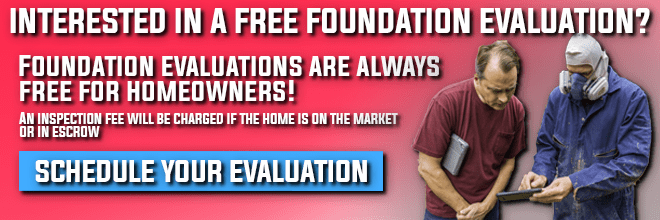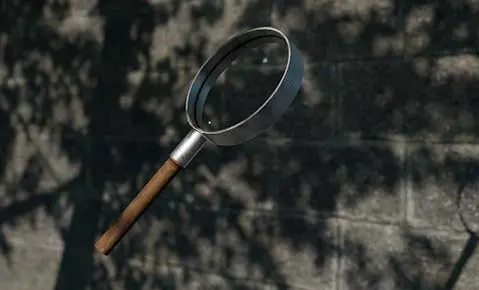Foundation repair can prove an expensive venture and instigate a good amount of financial angst. The unfortunate truth is – most home insurance policies do not cover foundation repair.
*Note – this is why we here at Dalinghaus have partnered with several 3rd party financial providers.
Many of us save for our kid’s college fund, a wedding, or a souped-up Camaro, but few of us ever considered dropping a good chunk of change to maintain equity in our home.
As a general rule of thumb: unless the instigating incident is directly listed as a covered “peril” then your insurance is under no obligation to provide financial assistance.
Consequently, many homeowners must buy separate earthquake and flood insurance because the vast majority of insurance companies see these two acts of God as too much of a liability.
Most insurance policies cover –
- Lightning Strikes
- Fire
- Civil Disturbances/Riots
- Roof collapse due to weight (sleet, snow, & ice)
- Windstorms
- Vehicular Damage
- Vandalism / Residential Mischief
- Damage caused by falling objects/aircraft
- Volcanic Eruption
- Theft
- Water Damage from AC overflow, heating, or plumbing
- A surprise visit from the Kool-Aid Man (oooh-yeahhh)

Here at Dalinghaus, less than one percent of our foundation repair projects are covered by homeowner’s insurance.
And, in these cases, there was always a high-pressure water leak (that was covered in the homeowner’s insurance policy and the damage was proven to be a direct result.)
In this article, we are going to cover:
- Expansive Soil – the primary uninsured cause of foundation failure
- How to prevent further Foundation Damage
- Why Foundation Repair is Worth the Price Tag
Fun Facts with Brian – The idea of home insurance in America was first introduced and heavily proliferated by none other than Benjamin Franklin who founded the Philadelphia Contributionship for the Insurance of Houses from Loss by Fire in 1752.
Expansive Soil – The Primary Uninsured Cause of Foundation Failure
Expansive soil is the number one uninsured origin of foundation failure in the United States. Expansive clays prove so destructive they account for over 2.3 billion dollars in damage annually, wreaking havoc over homes, pipelines, roads, and other structures (racking up a bill twice as much than from hurricanes, tornadoes, floods, and earthquakes combined).
Fun Facts with Brian – Peril is a noun derived from the Latin periculum which translates to “an attempt, trial, experiment; risk, danger” and the Old French peril “danger, risk”. Think nothing ventured, nothing gained.
What is Expansive Soil?
Expansive soil is clay-rich soil that has a high shrink-swell capacity, such as montmorillonite or bentonite, that is prone to expansion or shrinkage due directly to variation in water volume.
The non-permeable soil incurs structural damage to foundations via foundation heave or settlement.
Expansive soil damage is not covered by insurance because it is generally not considered a catastrophe.
It is a slow, gradual geological process and consequently falls under normal wear and tear.
In addition, expansive soil damage is so prevalent insurance companies would constantly be reimbursing compensation ad nauseam.
The two common destructive expressions of expansive clay are foundation settlement and foundation heave.
Foundation Settlement
Foundation settlement is when a foundation sinks below the soil gradient and settles into clay-rich terra firma, exacting undue stress upon the foundation and corresponding structure.
This is because the soil beneath the slab on grade or raised foundation is not competent, load-bearing soil.
Homes rarely settle in a uniform manner (one side sinking further and faster than another).
This imbalance inflicts tremendous tension on the foundation (the footing, concrete, rebar, mesh) and home (stud walls & inherent structure).
Foundation settlement often results in:
*Note – Remodeling or repairing a home before it has been stabilized/lifted to maximum practical recovery can result in recurring cosmetic corruption.
Foundation settlement is prevalent in Southern California due to varying seasonal moisture and soil composition.
Fun Facts with Brian – A classic and extreme example of foundation settlement is Mexico City’s Palace of Fine Arts which has settled/sunk more than 15 feet into clay-rich soil.
Foundation Heave
Foundation heave is the uplift of a foundation via the ballooning properties of expansive soil – the expansive clay crowns, emerging from gradient and exacting extreme pressure on the foundation and corresponding structure.
Foundation heave can pose a severe problem to slab on grade foundations because the soil attempts to push through the concrete. This often results in the triangle of death and creates trip hazards.
Foundation settlement often results in:
- Cracks (drywall, stucco, and slab)
- Sloped Floors
- Leaning Chimneys
- Sticky Doors and Windows
- Triangle of Death Crack
*Note -Yes, these are the exact same symptoms as settlement.
Foundation heave is prevalent in Arizona due to the hot, arid climate and soil composition.
Just a little bit of moisture (from a sprinkler system or light rain) can cause soil to bulge.
It takes some heavy super-sleuthing and experience in order to differentiate between foundation settlement and foundation heave. Unfortunately, neither is covered by insurance.
The other two perils not covered by insurance that can seriously affect your foundation are tree roots and faulty construction.
How to Prevent Foundation Damage
The best way to prevent further foundation damage is to install proper drainage:
- Gutters (spouts pointed away from the footing/foundation)
- French Drains (to lead water away from the home)
- V Drains (to direct water away from the foundation)
- Ensure there is at least a 6% concrete grade angled away from your home
Is Foundation Repair Worth the Price Tag?
So, the big question remains, if your insurance won’t cover your foundation repair is it worth the hefty price tag? We here at Dalinghaus Construction Inc. believe it is.
Foundation repair is worth the financial investment because it:
Secures Equity
Foundation repair keeps your largest financial investment safe and secure.
Addressing foundation failure returns your property value up to an average range and your lifetime steel pier warranty is transferrable via purchase and inheritance.
Repairs/Remodels Can Begin
Before attempting a spring remodel or mundane drywall patch-and-paint, make sure your foundation is secure.
Any cosmetic work done on a house before the foundation is fixed will have to be done again as the home continues to heave or settle.
Only after the home is properly stabilized can you repaint and remodel with certainty that you’re not throwing your money away.
Peace of Mind
Peace of mind is invaluable. While we can’t fix all of the serious, existential problems with life we can help you fix your foundation.
Ensurance: A Dalinghaus Job Well Done
In summary, most insurance companies do not cover foundation repair.
If you believe your foundation failure stems from a plumbing leak or other covered condition, please ask our foundation repair experts to verify, look for proof.
We can send our pictures and inspection notes to your insurance to help bolster your insurance claim.
However, if you’re insurance doesn’t cover your foundation repair, we do have financing available. Foundation repair is well worth the investment.
Download our Foundation Repair Guide for FREE for a more in-depth look at foundation repair –







